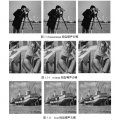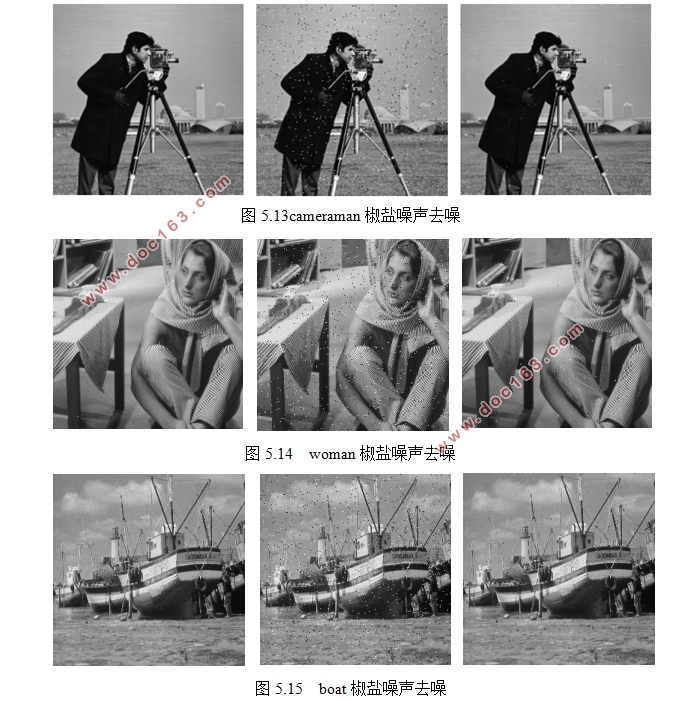基于深度学习的图像去噪及应用

基于深度学习的图像去噪及应用(任务书,开题报告,论文说明书19000字)
摘 要
在一个图像传输系统中,任何一个环节都可能受到噪声的污染造成图像质量下降。图像质量一旦下降,清晰度就会降低,一些重要的细节可能就会丢失,为了后续分析处理得以进行,需要有效提高图像的质量,减少噪声。随着人们对深度学习的研究日益深入,深度学习越来越多的用于图像处理,图像去噪就是其中的一个方面。
在传统的图像去噪中,以均值滤波和中值滤波最为经典,这两种方法都是从像素的邻域角度入手,直接在像素点上进行处理;而近年来,基于图像中一些相似的纹理结构,非局部平均算法随之出现。本文基于MATLAB平台,编写程序实现这三种图像去噪算法并进行去噪测试,同时,本文基于Ubuntu系统和Tensorflow框架,使用Python语言设计一种对称式的卷积神经网络结构来实现由含噪图像到去噪图像的特殊映射,该网络以含噪图像作为输入、去噪图像作为输出,其中经过卷积层、反卷积层,最终实现图像去噪。
文中将基于卷积神经网络的图像去噪与传统方法的图像去噪进行了对比,传统的图像去噪虽然有一定的去噪效果,但是使得图像的细节更加模糊,非局部平均算法去噪效果不错,但时间耗费太长。而基于卷积神经网络的去噪,对椒盐噪声和随机噪声都有着明显的效果,不仅峰值信噪比提升很多,而且去噪处理的时间明显缩短。因此,基于深度学习的图像去噪有着明显的优势。 [资料来源:http://doc163.com]
关键词:图像去噪;深度学习;卷积神经网络;反卷积
Abstract
In an image transmission system, any part may be affected by noise pollution, resulting in degraded image quality. Once the image quality is reduced, the sharpness will be reduced and some important details may be lost. In order to carry out the subsequent analysis and processing, it is necessary to effectively improve the quality of the image and reduce the noise.With the deepening research on deep learning, it is increasingly used for image processing, image denoising is one of the aspects.
In the traditional image denoising, the average filter and the median filter are the most classic. Both of these methods start from the pixel's neighborhood perspective and directly process at the pixel point. In recent years, non-local means algorithms have emerged based on some similar textures in the image. Based on the MATLAB platform, this paper writes programs to implement these three image denoising algorithms and performs denoising tests. At the same time, based on Ubuntu system and Tensorflow framework, this paper uses Python language to design a symmetric convolutional neural network structure to realize special mapping from noisy images to denoised images. The network uses noisy images as the input and denoise images asthe output, which passes through the convolutional layer and deconvolution layer, finally achieves image denoising.
This paper compares the image denoising based on convolutional neural network with the traditional method of image denoising. Although the traditional image denoising has some effect, it makes the details of the image more blurred. The non-local means algorithm has good denoising effect, but it takes too much time. The denoising based on convolutional neural network has obvious effects on salt and pepper noise and random noise. Not only the peak signal-to-noise ratio is greatly improved, but also the time for denoising is significantly shortened. Therefore, the image denoising based on deep learning has obvious advantages.
Key Words:image denoising;deep learning;convolutional neural networks;deconvolution
[资料来源:www.doc163.com]

目 录
第1章 绪论 1
1.1 图像去噪的目的、意义及研究现状 1
1.2 深度学习的发展 2
1.3 本文的研究内容与组织结构 2
第2章 图像去噪基础 4
2.1 图像去噪简介 4
2.1.1 噪声分类 4
2.1.2 图像去噪方法 4
2.1.3图像去噪效果评价 5
2.2 人工神经网络简介 6
2.2.1 神经元与神经网络 6
2.2.2 激活函数 8
2.3 卷积神经网络 9
2.3.1 卷积神经网络的网络结构 10
2.3.2 两个重要特征 11
2.4 实验平台 12
2.4.1 MATLAB简介 12
[资料来源:http://doc163.com]
2.4.2 Ubuntu系统 12
2.4.3 Tensorflow深度学习框架 13
2.5 本章小结 13
第3章 基于均值滤波和中值滤波的图像去噪 15
3.1 模板卷积 15
3.2 均值滤波法 16
3.3 中值滤波法 16
3.4 实验结果及分析 17
3.5 本章小结 24
第4章 基于非局部平均(NL-Means)的图像去噪 25
4.1 图像的冗余 25
4.2 非局部平均(NL-Means) 25
4.3 实验结果及分析 26
4.4 本章小结 29
第5章 基于卷积神经网络的图像去噪 31
5.1 网络结构设计 31
5.2 网络搭建与参数设置 32
5.2.1 网络搭建 32
5.2.2 参数设置 32
5.3 实验结果及分析 33
5.4 本章小结 36
第6章 实验结果对比分析 38 [来源:http://Doc163.com]
第7章 总结与展望 40
7.1 总结 40
7.2 展望 40
参考文献 42
附 录 43
致 谢 54
